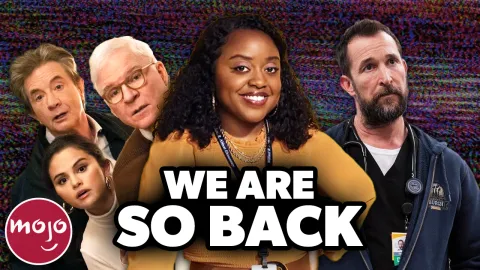How the Old Television Model Is Making a Comeback | Abbott Elementary, The Pitt, & More

How the Old Television Model Is Making a Comeback
Welcome to MsMojo, where today well be looking at the return of appointment television and the future of streaming.
When Netflix brought Arrested Development back seven years after its untimely cancellation, the award-winning comedys creator, Mitch Hurwitz, noted that the new medium of online streaming required a new format. That new format was binge-watching. Rather than releasing episodes on a weekly basis, the streamer introduced the idea of dumping entire seasons in one night, allowing viewers to decide their own schedule. Though traditional TV execs were skeptical of the method, and some experts worried about related health concerns, the big swing worked out in Netflixs favor. Audiences proved to be eager and willing to spend entire nights binging their favorite shows and, surprisingly, those shows proved to be a hit with critics as well. In 2013, House of Cards, Hemlock Grove, and the resurrected Arrested Development all landed Netflix a total of fourteen Primetime Emmy nominations, with House of Cards landing streaming its first major awards show win. It appeared as if online streaming, and particularly the binge-format, was the future of televisionbut could it last?
In just over a decade, public perception of Netflix has changed drastically. While shows like The Crown remained awards darlings, the majority of the streamers bloated output is considered weak and forgettable. Everything has been thrown to the wall, and not a lot of it is sticking. Of course, its important to note that Netflix is no longer a novelty. Services such as Disney+, Hulu, Amazon Prime, and HBO Max have since emerged and established themselves as tough competition. Unfortunately, the wide array of choices has also come with a wide array of subscription costs. With prices climbing each year, and services seemingly removing more content than they can produce, its easy to see why consumers have become disenchanted with streaming. Some have even begun to take advantage of the binge model, subscribing to a service with the intention of watching their favorite show and then cancelling immediately after. It all feels increasingly unsustainable - both for the streamers and their millions of subscribers.
Once thought to be a thing of the past, cable television has actually been seeing a surprising comeback in the midst of streamings messy decline. According to one study, 22% of consumers have chosen to return to cable as of 2025, with another 6% considering a return due to rising streaming costs. While this may not seem like a lot, it does suggest a significant shift in the publics mentality - one that can also be seen in the rising popularity of network and cable TV shows in recent years. Beginning in 2021, Abbott Elementary ushered in a new era for network sitcoms, entertaining both audiences and critics alike. Meanwhile, HBO found success in the young adult demographic with Euphoria, which not only drew in millions of viewers each week but quickly became the most tweeted about series of the decade. Even Succession began to make waves in its final season, garnering a sizable fanbase that steadily grew in numbers in the lead-up to the series shocking climax.
In 2020, COVID spread across the U.S. and forced many Americans into lockdown, presenting the perfect environment for nationwide binge watching. Unfortunately, while nostalgic rewatches and mindless entertainment like Tiger King thrived, ongoing film and television productions faced unprecedented challenges. With many unable to work within pandemic restrictions, several series were subject to cancellations or significant delays. After a brief boom in popularity, streaming took a hit in the following year, and companies were forced to consider new ways to grow and maintain their online viewership. Some services turned to the old television model - releasing episodes on a weekly basis. Whether they released three, two, or just one episode a week, the desired outcome was the same - to keep people interested and talking. And, so far, it seems to be working in their favor.
Hulu employed a demi-binge model with its original series Only Murders in the Building, dropping a three episode premiere followed by single episode weekly releases. Its first episode, released in August of 2021, earned the honor of the most watched comedy premiere in Hulus history and, by that October, it had become Hulus most watched comedy series ever. HBO Max and Apple TV+ saw similar successes with weekly release series like The Pitt and Severance, with the latter even eclipsing the popularity of former Apple powerhouse Ted Lasso.
So what does this mean for the future of watching TV online? Its hard to say. Its unlikely that streaming will be going anywhere anytime soon, but it looks like the way we watch may be changing for good. While The Bear still manages to maintain success in spite of its full season drops, it seems like an outlier in the current climate. Even Netflix appears to be turning its back on the format that made them famous, announcing that the final season of Stranger Things will be doled out in three separate installments rather than all at once. Hopefully the return of this old way of watching will be better for the shows - and better for our brains.
Do you prefer to binge full seasons of TV or watch new episodes weekly? Let us know in the comments!